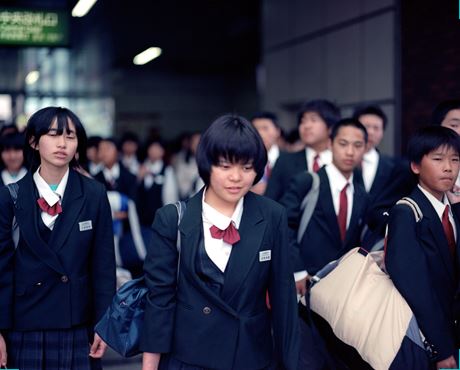Having lighter hair can be an offence in Japanese schools. A student in Osaka prefecture is suing her high school for ¥2.2 million (£14,752) in damages after she was forced to dye her hair black in 2015, according to local media reports. The student, 18, said that in addition to mental suffering, the dye caused physical harm to her scalp and hair. The first arguments were heard in a court in Osaka today (Oct. 27).
The student was allegedly forbidden to attend class last year when her hair wasn’t dyed black enough, and was later prevented from going on a school trip. Her name was also removed from the school register. She hasn’t attended school since late 2016. The school reportedly told the girl’s lawyer that even a “blonde-haired foreign-exchange student would have to dye their hair black.” The Osaka prefectural education ministry told the Asahi newspaper (link in Japanese) that it could not provide comment, pending further details from the court case.
In addition to student uniforms, many schools in Japan impose strict rules on personal appearance, including ones against hair dyeing. According to a list of regulations at a high school in Fukui prefecture posted by an English teacher there, girls may not wear scrunchies or jewellery of any kind. Another teacher said that at some junior high schools, girls are not allowed to pluck their eyebrows.
The New York Times documented (paywall) the chapatsu (“tea-colored hair”) craze in the mid-’90s, when hair-dyeing started to take off in Japan. For some, the trend was an unwelcome statement of rebelliousness, with private and public employers shying away from job candidates with non-black hair. Some assert that the stigma against “un-Japanese” characteristics is not only discriminatory, but also increasingly out of sync with Japan’s demographic makeup, which is very slowly becoming more diverse as the children of immigrants, such as Brazilian-Japanese (paywall), grow up in the country.
According to the Mainichi newspaper (link in Japanese), some schools in Osaka prefecture have introduced a hair-color registration system so that those who are born with lighter hair are not wrongfully reprimanded. In Tokyo, some schools require a “certification of original hair color,” though the municipal education board said that the submission of such personal information is voluntary. A survey conducted by the Asahi newspaper earlier this year found that almost 60% of schools in Tokyo require students to prove that their lighter-colored hair is natural, for example through childhood photos.
Naoki Ogi, a well-known education commentator in Japan, said any sort of certificate to prove a student’s natural hair color is a “violation of human rights” and that adults should be “aiming for an equal relationship with children that is also caring and respectful,” according to the Asahi newspaper (link in Japanese). Meanwhile, students with naturally curly hair are often subject to similar scrutiny, as perms, too, are forbidden in schools.
Source: quartz



